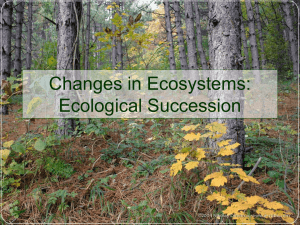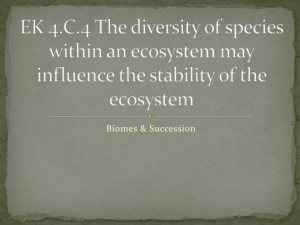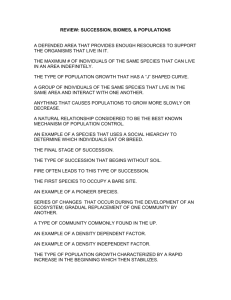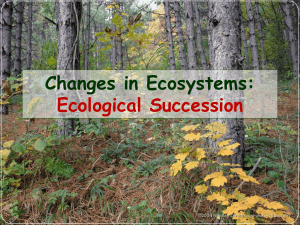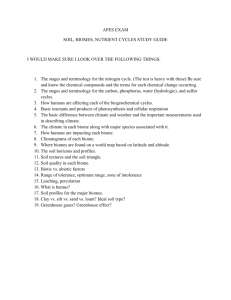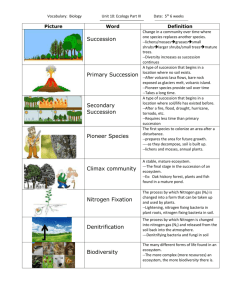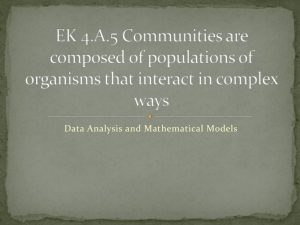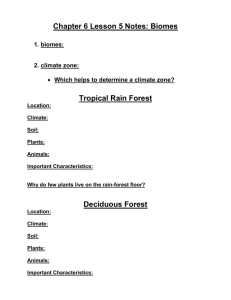sample exam #4
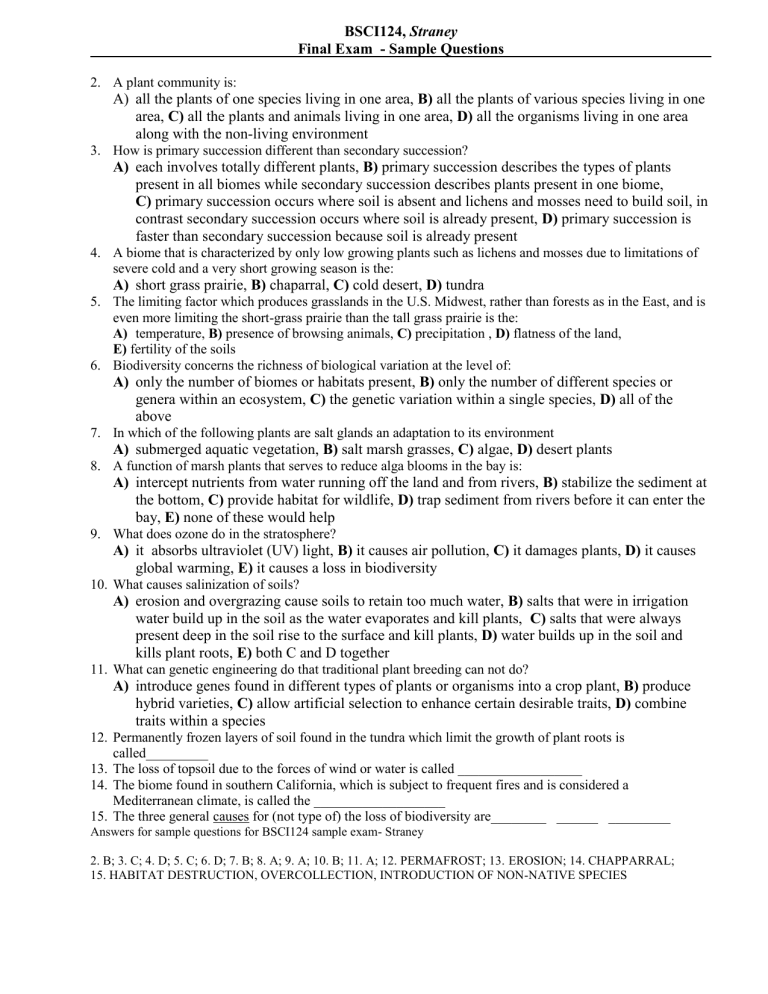
BSCI124, Straney
Final Exam - Sample Questions
2. A plant community is:
A) all the plants of one species living in one area, B) all the plants of various species living in one area, C) all the plants and animals living in one area, D) all the organisms living in one area along with the non-living environment
3. How is primary succession different than secondary succession?
A) each involves totally different plants, B) primary succession describes the types of plants present in all biomes while secondary succession describes plants present in one biome,
C) primary succession occurs where soil is absent and lichens and mosses need to build soil, in contrast secondary succession occurs where soil is already present, D) primary succession is faster than secondary succession because soil is already present
4. A biome that is characterized by only low growing plants such as lichens and mosses due to limitations of severe cold and a very short growing season is the:
A) short grass prairie, B) chaparral, C) cold desert, D) tundra
5. The limiting factor which produces grasslands in the U.S. Midwest, rather than forests as in the East, and is even more limiting the short-grass prairie than the tall grass prairie is the:
A) temperature, B) presence of browsing animals, C) precipitation , D) flatness of the land,
E) fertility of the soils
6. Biodiversity concerns the richness of biological variation at the level of:
A) only the number of biomes or habitats present, B) only the number of different species or genera within an ecosystem, C) the genetic variation within a single species, D) all of the above
7. In which of the following plants are salt glands an adaptation to its environment
A) submerged aquatic vegetation, B) salt marsh grasses, C) algae, D) desert plants
8. A function of marsh plants that serves to reduce alga blooms in the bay is:
A) intercept nutrients from water running off the land and from rivers, B) stabilize the sediment at the bottom, C) provide habitat for wildlife, D) trap sediment from rivers before it can enter the bay, E) none of these would help
9. What does ozone do in the stratosphere?
A) it absorbs ultraviolet (UV) light, B) it causes air pollution, C) it damages plants, D) it causes global warming, E) it causes a loss in biodiversity
10. What causes salinization of soils?
A) erosion and overgrazing cause soils to retain too much water, B) salts that were in irrigation water build up in the soil as the water evaporates and kill plants, C) salts that were always present deep in the soil rise to the surface and kill plants, D) water builds up in the soil and kills plant roots, E) both C and D together
11. What can genetic engineering do that traditional plant breeding can not do?
A) introduce genes found in different types of plants or organisms into a crop plant, B) produce hybrid varieties, C) allow artificial selection to enhance certain desirable traits, D) combine traits within a species
12. Permanently frozen layers of soil found in the tundra which limit the growth of plant roots is called_________
13. The loss of topsoil due to the forces of wind or water is called __________________
14. The biome found in southern California, which is subject to frequent fires and is considered a
Mediterranean climate, is called the ___________________
15. The three general causes for (not type of) the loss of biodiversity are________ ______ _________
Answers for sample questions for BSCI124 sample exam- Straney
2. B; 3. C; 4. D; 5. C; 6. D; 7. B; 8. A; 9. A; 10. B; 11. A; 12. PERMAFROST; 13. EROSION; 14. CHAPPARRAL;
15. HABITAT DESTRUCTION, OVERCOLLECTION, INTRODUCTION OF NON-NATIVE SPECIES


